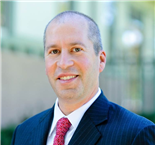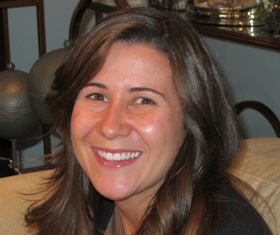Vail-area U.S. Rep. Polis wants to push oil and gas fracking back at least 1,000 feet from schools
In Colorado, oil and gas operations are required to be at least 350 feet from schools.
U.S. Rep. Jared Polis, D-Colo., would like to increase the setback nationwide to 1,000 feet. He recently introduced an amendment that would do just that for primary and secondary schools located near U.S. oil and gas resources. The amendment, which failed, would have been attached to the controversial Domestic Energy and Jobs Act, or H.R. 4480, sponsored by Rep. Cory Gardner, R.-Colo. H.R. 4480 is strongly opposed by sportsmen and environmental groups as it would mandate increased federal agency leasing of oil and gas resources and weaken the country's clean air protections. Polis has vowed to keep trying to put more distance between schools and drillers.
“An increased setback would better protect school-aged children from the negative impacts of air pollution from drilling sites. Studies indicate that there are increased levels of carcinogenic fumes, such as benzene, near fracking sites,” Polis' spokesman Chris Fitzgerald wrote in an email to the Colorado Independent.
Protecting children and other people from risks that hydraulic fracturing, aka fracking, operations pose to communities is receiving more attention than ever in Colorado and elsewhere as more rigs creep ever closer.
The oil and gas companies paint their detractors as alarmists. The health concerns are blown out of proportion, they argue. Whenever possible, companies say they try to drill even farther out than the law requires and, in the case of Red Hawk and Erie elementary schools, during summer break.
But the noise, traffic and questions of public safety are too much for some parents. If they aren't pulling their children out of the affected schools and moving out of their communities, they are rallying together and taking to the streets with protest signs, trying to reclaim their neighborhoods.
Getting results or even answers isn't easy.
Growing natural gas development in urban Texas where schools, health facilities, homes and elderly communities are increasingly at risk led to a Fort Worth League of Neighborhoods report (pdf) last year titled “Recommendations For Drilling Near Schools.”
“In its genesis, this project was envisioned to be a comprehensive review of available data with concomitant recommendations. Once into the project, however, it became patently clear that there is an appalling lack of information available on which to base sound responsible decisions,” the report concluded. “It was deeply disturbing how little information is available to elected officials or State regulating entities that is independent of the operators. Proper due diligence is nearly impossible. This was both startling and alarming. Further, there appears to be a complete relegation of responsibility by both the City and State which allows industry to conduct operations at their own discretion with very little oversight or verification by governmental entities or accountability to the public.”
The Fort Worth League of Neighborhoods further found “the city has no comprehensive plan or map of drilling or pipeline placement for the entire city; has not conducted independent on-going monitoring for emissions; and has no will to assume authority for such.” Nor is there a mechanism in place for routine emissions checks at existing wells or processing facilities, according to the group's report.
Fracking isn't just putting pressure on schools. It is also competing for their water supplies.
The amount of water used each year in Colorado — between 22,100 and 39,500 acre feet — is enough to meet the annual needs of up to 296,100 residents or more than the population of Orlando, Fla., Cincinnati, Ohio, or Buffalo, N.Y., according to a Western Resource Advocates report released today.
“It is a travesty that in a water-starved state like Colorado, we are using so much water for oil and gas drilling,” said Longmont resident Barbara Fernandez, who retired in 2011 after 24 years with the Colorado Public Utilities Commission and is concerned about fracking near schools and residences.
There are 89 public schools in Colorado within a 1,000-foot radius of federal subsurface estates.
"Schools should be safe havens for learning and growing, not places for worrying about whether the wind is blowing industrial poisons into the classroom," said Gary Wockner of Clean Water Action. "We applaud Rep. Polis' leadership to protect school kids and families from cancer-causing chemicals emitted during oil and gas drilling and fracking.”
Editor's note: This is the fifth and final installment in a series on hydraulic fracturing near schools. Read the first part here, the second part here, the third part here. and the fourth part here.
![]() 0 Comments on "Vail-area U.S. Rep. Polis wants to push oil and gas fracking back at least 1,000 feet from schools"
0 Comments on "Vail-area U.S. Rep. Polis wants to push oil and gas fracking back at least 1,000 feet from schools"
Be the first to comment below.



 Vail Town Council to weigh new plan to redevelop T...
Vail Town Council to weigh new plan to redevelop T...  All about indexes
All about indexes  Transforming your social security into a winning r...
Transforming your social security into a winning r...  Pass sales, real estate transactions, revenues inc...
Pass sales, real estate transactions, revenues inc...  Vail Valley native with passion for Biophilic inte...
Vail Valley native with passion for Biophilic inte...  Beaver Creek starts work on new summer activities
Beaver Creek starts work on new summer activities  Land Trust, ECO Trails, Vail Resorts team up to cl...
Land Trust, ECO Trails, Vail Resorts team up to cl...  EUROVISION named Host Broadcaster for 2015 World A...
EUROVISION named Host Broadcaster for 2015 World A...  Vail Resorts brings back Lindsey Vonn's 'School of...
Vail Resorts brings back Lindsey Vonn's 'School of...  Hundreds turn out for 2015 World Championships vol...
Hundreds turn out for 2015 World Championships vol...  Eagle County Senior Health Expo and 9th Annual Hea...
Eagle County Senior Health Expo and 9th Annual Hea...  Final race of Vail Mountain Trail Running Series s...
Final race of Vail Mountain Trail Running Series s...  Before you write your will ...
Before you write your will ...  2015 World Ski Championships volunteer recruitment...
2015 World Ski Championships volunteer recruitment...  Ascent Sotheby’s International Realty in Vail an...
Ascent Sotheby’s International Realty in Vail an...  CDOT outlines road closures for local stages of US...
CDOT outlines road closures for local stages of US...  Italian artist creates unique trophies for Vail, B...
Italian artist creates unique trophies for Vail, B...  Vail Recreation District once again hosting Jake W...
Vail Recreation District once again hosting Jake W... 

